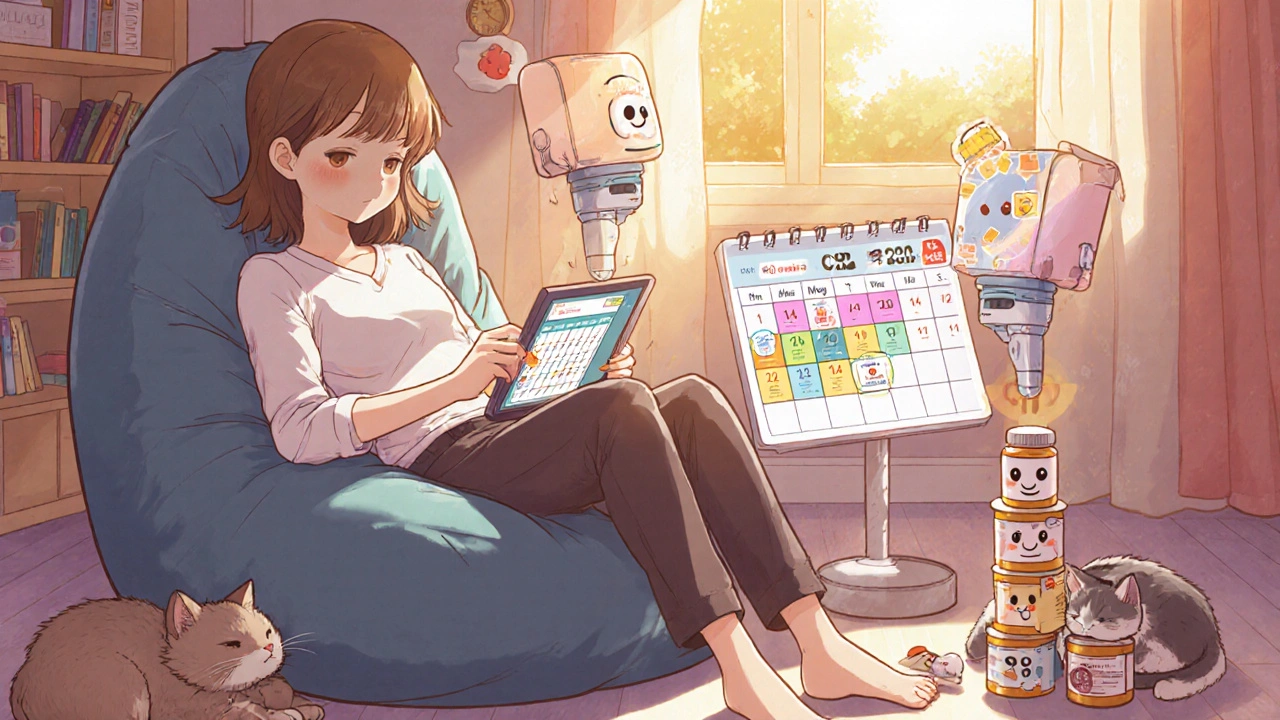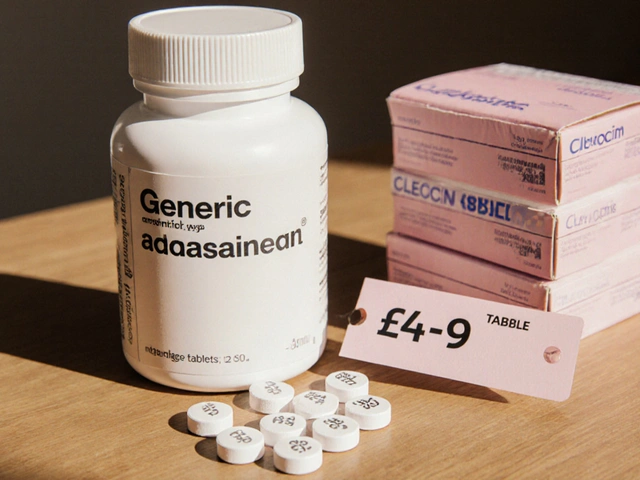Buying your monthly medications through the mail isn’t just a convenience-it can save you hundreds of dollars a year. But it’s not perfect. For people taking long-term drugs for high blood pressure, diabetes, or cholesterol, mail-order pharmacies often cut costs by offering a 90-day supply for the price of two. That means if your 30-day prescription costs $10 at the local pharmacy, you pay just $20 for three months instead of $30. Sounds simple. But is it always the best choice?
How Mail-Order Pharmacies Save Money
Mail-order pharmacies aren’t new. The U.S. Department of Veterans Affairs started one in 1973 to serve veterans living far from clinics. Today, companies like Express Scripts, CVS Caremark, and OptumRx handle over 1.5 billion prescriptions a year. These aren’t small operations-they use automated systems to fill thousands of pills a day with error rates as low as 0.016%, compared to 0.04% at retail pharmacies. That’s 60% fewer mistakes. The real savings come from volume. When you get a 90-day supply, you’re not paying for three separate 30-day fills. You’re paying for two. That’s a 33% discount on your out-of-pocket cost. For someone taking three maintenance medications, that could mean $100-$200 saved each year. If you’re on brand-name drugs, the savings are even bigger-mail-order pharmacies typically offer 4-7 percentage points better discounts than retail stores. Most health plans, including Blue Cross NC and Sutter Health Plus, include mail-order as a standard benefit. You don’t pay extra to use it. All you need is your prescription, your plan’s mail-order portal, and a few minutes to set up automatic refills. Many users report syncing all their meds to arrive on the same day-no more juggling multiple pharmacy trips.Why People Love Mail-Order Pharmacies
The biggest reason people stick with mail-order? Convenience. If you have mobility issues, live in a rural area with no nearby pharmacy, or just hate waiting in line, having your meds delivered to your door is a game-changer. A 2023 survey by Blue Cross NC found that 82% of users rated the convenience as high or very high. Another win: better adherence. Studies show people who use mail-order pharmacies are 5-15% more likely to take their meds regularly. That’s huge for chronic conditions. Missing doses for blood pressure or diabetes meds can lead to hospital visits, which cost far more than the medication itself. One 2011 study in PubMed Central linked mail-order use to fewer emergency room trips for heart and diabetes patients. Pharmacists are also more accessible. Mail-order pharmacies offer 24/7 phone consultations. You can call anytime to ask about side effects, drug interactions, or how to take your pills. Their systems check all your prescriptions-even those filled at other pharmacies-for dangerous combinations. That kind of oversight is rare at busy retail locations.The Hidden Downsides
Here’s where things get tricky. Mail-order isn’t built for emergencies. If you suddenly need an antibiotic, a new painkiller, or a refill on a drug you just started, you’re stuck waiting 5-7 business days. That’s too long if you’re in pain or sick. Delivery problems happen. About 0.5% of shipments get lost, damaged, or delayed. One Reddit user shared that their blood pressure meds disappeared in transit, forcing them to pay full price at Walgreens for an emergency refill. Another user said their pills arrived melted because the box wasn’t insulated enough. Cost savings aren’t guaranteed for everyone. Some health plans structure their copays so that the mail-order discount is barely noticeable. If your plan charges the same copay for 30-day and 90-day fills, you’re not saving anything. You’re just getting more pills. Always check your plan’s formulary and cost-sharing rules before switching. And not all PBMs are equal. UnitedHealth Group’s OptumRx scored 4.3 out of 5 for user guides in a 2023 J.D. Power survey. Some smaller regional providers scored under 3.0. Poor instructions can lead to confusion-like not knowing how to transfer your prescriptions or how to track your package.
Who Benefits Most?
Mail-order pharmacy services work best for people with stable, long-term prescriptions. Think:- High blood pressure or cholesterol meds
- Diabetes pills like metformin or insulin
- Thyroid medication
- Antidepressants or anti-anxiety drugs
- Any drug you take daily for six months or longer
- Live far from a pharmacy
- Have trouble leaving the house
- Take three or more maintenance drugs
- Want fewer trips to the pharmacy
Who Should Avoid It?
Avoid mail-order if you:- Need meds right away (antibiotics, painkillers, new prescriptions)
- Travel often and can’t predict where you’ll be
- Have medications that require refrigeration (some biologics)
- Prefer face-to-face advice from your pharmacist
How to Get Started
Setting up mail-order is easy. Here’s how:- Check your health plan’s website for their mail-order pharmacy partner (usually Express Scripts, CVS Caremark, or OptumRx).
- Log in to your member portal and find the mail-order section.
- Search for your medication. If it’s covered, you’ll see the 90-day price.
- Transfer your prescription. You can usually do this online or by calling the pharmacy’s support line (they’re available 24/7).
- Set up automatic refills so you never run out.
What’s Changing in 2025
The mail-order industry is evolving fast. In early 2024, Express Scripts started offering real-time GPS tracking for every shipment. CVS Caremark announced in March 2025 that they’ll roll out same-week delivery to 85% of U.S. addresses. That’s a big step toward fixing the biggest complaint: wait time. Cold-chain delivery for temperature-sensitive drugs like biologics is also expanding. More people with MS, rheumatoid arthritis, or cancer are switching to mail-order because these drugs can now be shipped safely. But there’s a cloud on the horizon. The 2023 Lower Drug Costs Now Act (H.R.3) could limit how much mail-order pharmacies can charge less than retail. If passed, it could erase up to 40% of current savings. That’s why industry groups like PCMA warn that if this law changes, the financial incentive to use mail-order could vanish.Final Verdict
Mail-order pharmacies are a smart choice for most people on long-term meds. The savings are real, the safety record is strong, and the convenience is unmatched. But they’re not a one-size-fits-all solution. If you take daily pills for a chronic condition, switch to mail-order. Do the math on your copays. Set up automatic refills. Use the 24/7 pharmacist line. You’ll save money and probably take your meds more consistently. But if you’re on new prescriptions, need quick refills, or travel constantly, stick with your local pharmacy. Keep mail-order as a backup-not your only option. The bottom line: Mail-order isn’t about replacing your pharmacist. It’s about making your medication routine easier, safer, and cheaper-if you use it right.Is mail-order pharmacy cheaper than retail?
Yes, for maintenance medications. Most plans charge you for two months’ supply when you order a 90-day supply, saving you about 33% on out-of-pocket costs. For example, a $10 30-day pill becomes $20 for 90 days instead of $30. Savings add up quickly if you take multiple drugs. But check your plan-some charge the same copay regardless of supply length.
How long does mail-order delivery take?
Most mail-order pharmacies deliver within 5-7 business days. Express Scripts and CVS Caremark now offer tracking so you know exactly when your package will arrive. Same-week delivery is being rolled out in 2025 for 85% of U.S. addresses, but it’s not standard yet. Don’t rely on mail-order if you need meds within 24-48 hours.
Can I use mail-order for all my medications?
No. Mail-order is designed for maintenance drugs you take daily over months or years-like blood pressure, diabetes, or cholesterol meds. It’s not meant for antibiotics, painkillers, or new prescriptions. Always keep a 7-14 day supply on hand at your local pharmacy for emergencies or urgent needs.
What if my medication gets lost in the mail?
About 0.5% of shipments have delivery issues. If your package is lost, damaged, or delayed, contact your pharmacy benefit manager’s 24/7 customer service line immediately. Most will send a replacement at no extra cost, but you may need to pay for a temporary refill at a retail pharmacy. Always keep your receipt and tracking number.
Do I need special equipment to use mail-order?
No. You just need internet access or a phone to place orders. Most major PBMs have websites and apps that are easy to use. You don’t need to be tech-savvy. The biggest requirement is understanding your health plan’s copay structure. If you’re unsure, call your insurer-they’ll help you compare costs between retail and mail-order.







Savakrit Singh
November 27, 2025Mail-order pharmacies are a game-changer for chronic medication users 🚀💸. I’ve been on 90-day refills for my BP meds for 2 years now-saved $1,400+ since 2022. Automated refills? Yes. No more pharmacy lines? Double yes. 🙌💊 The 0.016% error rate? More reliable than my local CVS. And 24/7 pharmacist access? That’s luxury-tier healthcare. 🏥✨